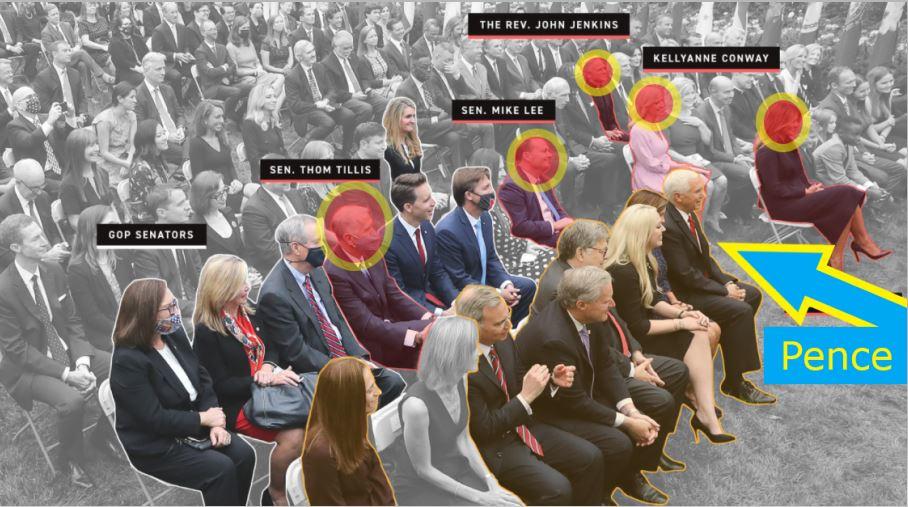If certain federal employees are “non-essential,” then why are they employed in the first place?
David Floyd
Planet Infowars
Oct. 7, 2013
On October 1st, the federal government shut down as a direct result of Congress failing to approve a Continuing Resolution to fund the government, or, more accurately, as a result of 535 career politicians and 1 community organizer failing to agree on how to spend money that the United States doesn’t have in the first place.
The visible effects of this supposed shutdown have, thus far, been hardly different from business as usual. While many “non essential” federal workers have been furloughed, the House has approved a bill to provide those “non essential” federal workers with back pay once the government is “reopened” – or in other words, has given them a paid vacation. One wonders why, if these federal employees are non essential, they are employed by the federal government in the first place, at an annual cost ranging into the billions. Senators, Representatives, and the President will continue to receive paychecks, despite the very real threat that disabled veterans will not. We have continued to conduct domestic spying operations and foreign military operations, rolled out a multi-trillion dollar federally mandated health care bill, and have seen Congress and the President continue their meaningless game of jockeying for political position and engaging in a media offensive aimed primarily at garnering votes for the 2014 midterms.
In fact, the only significantly visible changes we have seen since October 1st have been the Washington, DC World War 2 Memorial (and all other national parks and monuments) shut down and guarded, and, of course, the unintentional yet utterly predictable failure of the Healthcare Marketplace access and sign up options.
While the transparent reasons for this government “shutdown” are the refusal of House Republicans to decouple delaying Obamacare from passing a Continuing Resolution to fund the government and the refusal of Senate Democrats and the President to negotiate in any way whatsoever, the real, underlying reason for the shutdown — as well as the pending and potentially far more serious fight over the debt ceiling — is the fact that the United States federal government continues to insist on spending money far in excess of its annual revenues while making no serious attempt to live within fiscal reality. There are a few serious myths regarding the federal budget and federal spending, and understanding and dispelling these myths is key to understanding the fiscal precipice upon which we stand.
Myth #1 — Deficit reduction is the answer to our fiscal problem
That’s right – this is a myth, and a very tricky one. Reducing the deficit sounds like a good thing, right? Wrong. Reducing the deficit will not solve the nation’s financial problems. Words are extremely important here – rather than proposing to “reduce” anything, all that proponents of deficit reduction are asking for is for the nation to continue to spend money it doesn’t have, just at a slower rate. Or in other words, the national debt will still be going up every single year.
Let’s take the example of a gunshot victim. First responders will immediately work to slow the bleeding. However, all that does is buy time for the victim to get to the hospital. What the victim needs is for the bleeding to be stopped. Similarly, reducing the deficit means that we might buy ourselves some time, but ultimately what we need is deficit elimination. Any politician who proposes deficit reduction is simply attempting to appear to be proposing a solution, while in fact that politician is refusing to make tough decisions or take meaningful action in service of a long-term fix.
Proposing deficit elimination would require serious proposals, tough decisions, and most importantly, potentially lost votes in the next election cycle — which is the reason most politicians are not serious about eliminating the deficit.
Myth #2 — Republicans are Fiscal Conservatives and Democrats are Tax and Spend Liberals
Republicans continually paint the GOP as the party of fiscal responsibility, while decrying the Democrats for wanting to tax and spend. In reality, nothing could be further from the truth. Going back 30 years, the national debt has risen at a shocking pace. During the Reagan Administration, the United States ran a cumulative budget deficit of $1.87 trillion over 8 years. During Bush Sr’s single term, debt skyrocketed an additional $1.48 trillion. During Clinton’s two terms, the United States added another $1.42 trillion to the national credit card – and as high as those numbers may seem, are nothing compared to the $6.11 trillion during Dubya’s 8 years or the $6.06 trillion in Obama’s first 4 and a half years (projecting 8 full years of President Obama is just depressing, from a fiscal standpoint). Of course, the President isn’t solely responsible for the budget (or, these days, Continuing Resolutions), so let’s look at the makeup of Congress during the same time frame. Of the 16 Congresses since Reagan’s first Administration, we have seen 11 instances in which the same party controlled both Houses of Congress, and only 5 in which they did not. Of the 11 cases where the same party controlled both the House and the Senate, the Democrats were in control for 6 2 year terms, and Republicans for 5 2 year terms. And, although there was more than one 2 year cycle in which the “fiscally responsible” GOP controlled both Houses of Congress and the White House, the deficit continued to rise in those years.
The only consistency that can be drawn from this is that no matter which Party controlled the White House or Congress from the start of the Reagan Administration to today, with only 1 exception (2010, where spending was reduced by a paltry $100, only to rise again in 2011), federal spending increased every single year. Adjusted for inflation, there were only 3 exceptions to this ever-increasing cycle of federal spending (the aforementioned 2010, as well as 1987 and 1993, and in each case the spending reduction was less than $60 billion in adjusted dollars). While it can easily be stated that the Democrats are the party of “Tax and Spend,” it’s equally obvious that the GOP is not the party of fiscal responsibility.
Myth #3 — Defense Spending and Iraq/Afghanistan are the primary reason for the deficit
The political left often blames defense spending and the wars in Afghanistan and Iraq for the ballooning federal deficit. This is stunningly hypocritical, as many of the liberals decrying the wars today voted for them back in 2001 and 2003 – and although Obama, who was elected to the US Senate in 2005, did not have the opportunity to vote against (or, more likely, for) either the war in Afghanistan or Iraq, has certainly taken the opportunity to conduct an unprecedented number of military interventions around the world since his inauguration in 2009. Not only hypocritical, this view is also stunningly wrong.
In fiscal year 2013, the last full year prior to sequestration, the federal government took in $2.902 trillion in total revenue, and spent $3.803 trillion. This resulted in a projected deficit of $901 billion. In the same year, the Department of Defense (and including all supplementary spending for overseas operations and contingencies – ie, the wars) received a budget of approximately $673 billion. Additionally, and in an effort to incorporate all possible defense-related spending, to that total we can add $55 billion from the Department of Homeland Security and $53 billion for the National Intelligence Program (such as the CIA and NSA, to name the 2 most prominent examples), bringing total defense-related spending to $781 billion.
In other words, if the United States reduced all spending relating to national defense, homeland security, and national intelligence gathering to $0 – which absolutely nobody from any party is proposing to do, as well as immediately ending all overseas military action, which virtually nobody from any party was proposing to do, then in FY ’1 the budget deficit would still have been approximately $120 billion.
The Emergency Election Sale is now live! Get 30% to 60% off our most popular products today!




